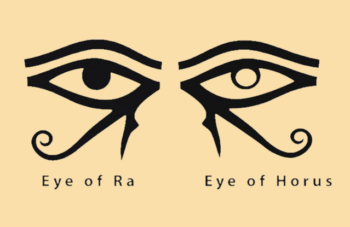Definition:
The “Eye of Deception” is a symbolic representation that what is being observed or conveyed is false or misleading. It serves as a warning or indication that what is presented is not to be trusted.
Etymology:
The word “eye” comes from the Old English ēage, which is related to similar words in other Germanic languages, like Old High German auga and Gothic augô. The eye has long been associated with vision, perception, awareness, and truth. Symbolically, the eye often represents clarity, insight, or observation.
The word “deception” derives from the Latin deceptionem (nominative deceptio), meaning “a deceiving, a cheating.” The root decipere means “to ensnare, take in, beguile, cheat,” combining de- (away) with capere (to take). It implies misleading.
When combined as “Eye of Deception,” the phrase suggests a metaphorical use of the eye as a symbol of perception or understanding, but in this case, it implies falsehood or trickery.
Symbolism:
The pronunciation of the word “icon” consists of the words “eye” and “con,” as an eye symbolizes a con.
In the animated movie “Pinocchio” (1940), there is a scene where Pinocchio has been kidnapped and locked in a cage. His fairy godmother appears and asks him what happened. Pinocchio begins to lie to avoid admitting that he ignored the warnings he had been given. As he lies, his nose grows longer. Pinocchio is depicted with one eye closed as he looks at the small leaf sprouting from his nose. Click to watch the video clip.
In the animated movie “Pinocchio & The Emperor of the Night” (1987), there is a scene where Pinocchio and a group of characters are trying to escape a dissolving ship. The door is closed, and the handle is far too high for any of them to reach. Pinocchio comes up with the idea of lying so that his nose will grow long enough to pull the handle. He shuts his left eye as he begins to lie. Click to watch the video clip.

In the animated movie “Pinocchio & The Emperor of the Night” (1987), there is a scene where the two scam artists, Scalawag the raccoon and Igor the monkey, are tricking a crowd of people with a rigged gambling game called “cups & mouse.” The crowd must guess which cup hides the mouse as Scalawag shuffles them around. They use a trained mouse that remains under the chosen cup when lifted, ensuring that the scam artists win no matter which cup is picked. While Scalawag is distracting the crowd, Igor steals from them. Click to watch the video clip.
In the animated movie “Pinocchio & The Emperor of the Night” (1987), there is a scene where the two scam artists, Scalawag the raccoon and Igor the monkey, come across Pinocchio, who is carrying a gold jewel box to sell to the mayor for his father, Geppetto. Scalawag and Igor decide to scam Pinocchio by claiming that the mayor is underpaying him, and they offer to trade the Pharaoh’s ruby, which is a fake. Scalawag keeps one eye open as he tries to get Igor to play along with the scam. Click to watch the video clip.
There is a card in the game “Yu-Gi-Oh! Trading Card Game,” titled “Eye of Deception.”

The poster for the movie “Eyes of Deception” (2021) features a close-up of a single human left eye with a red iris.
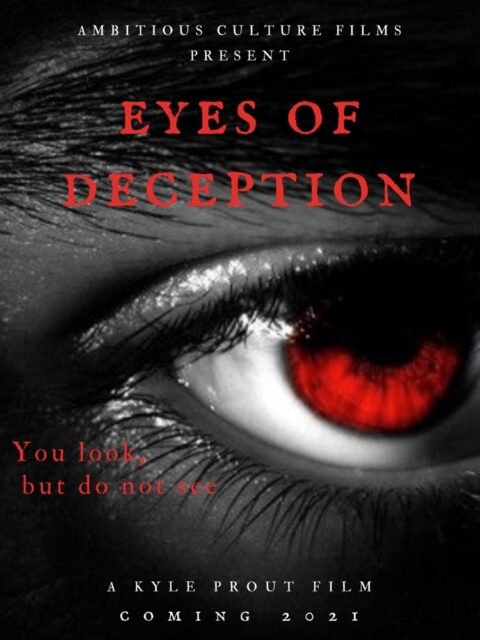
Netflix had a thumbnail for the movie “Liar Liar” (1997) featuring the character Fletcher Reede covering his left eye with his hand, which is a snapshot from the movie.
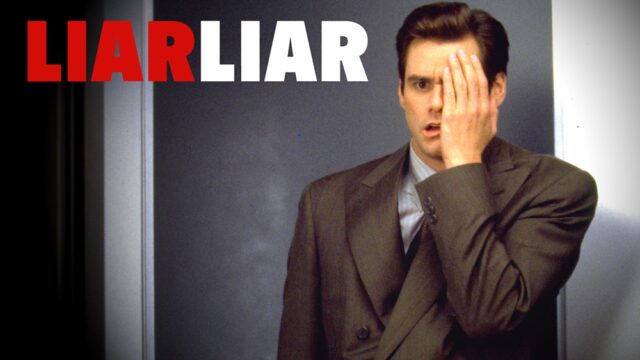
The TV series “Pretty Little Liars” (2010-2017) frequently used one–eye symbolism in its promotions.
In one promotional poster for “Pretty Little Liars,” four out of five characters has only one eye visible in their own triangle pointing upwards. An eye in a triangle forms the Eye of Providence symbol.
In another promotional poster for “Pretty Little Liars: The Perfectionists,” five characters are standing in a triangular human formation, each wearing half of a broken, reflective mask. The one–eye symbolism from the masks together with the triangular human formation forms the Eye of Providence symbol.
The opening credits for the TV series “Pretty Little Liars” (2010-2017) have had different variations throughout the seasons, and every single one has included the symbol of one eye. Click to watch the video clips.
“Lie to Me” (2009-2011) is an American crime drama television series that centers on Dr. Cal Lightman, a deception expert who uses his knowledge of microexpressions and body language to detect when someone is lying. His team, known as The Lightman Group, assists law enforcement, government agencies, and private organizations in uncovering the truth during investigations. It is worth noting that the study of microexpressions and the Facial Action Coding System (FACS) is fictional, as it is impossible to determine whether people are lying based solely on body language, since people can lie through body language. The TV series frequently uses an eye to symbolize lying.
On one poster for the “Lie to Me,” the main character Dr. Cal Lightman is smiling with a black eye. The smile and the eye together forms the symbol of Islam, also known as the Mason symbol.
The opening credits for the TV series “Lie to Me” (2009-2011) features several images focused on one eye. Click to watch the video clips.
The cover and poster artwork for the series “Liar” (2017-2020) feature one–eye symbolism, as the main characters are depicted with either only one eye in frame, one eye in shadow, or with their face shown from the side, making only one eye visible.
The movie poster for “American Liar” (2021) features a split image of two characters, each with only half of their face visible.

The single cover for “Magnus: Liar (ft. Zeli)” (2020) features a red, devil-like head with small horns, tilted upwards with a mask above its face, with only one eye visible.
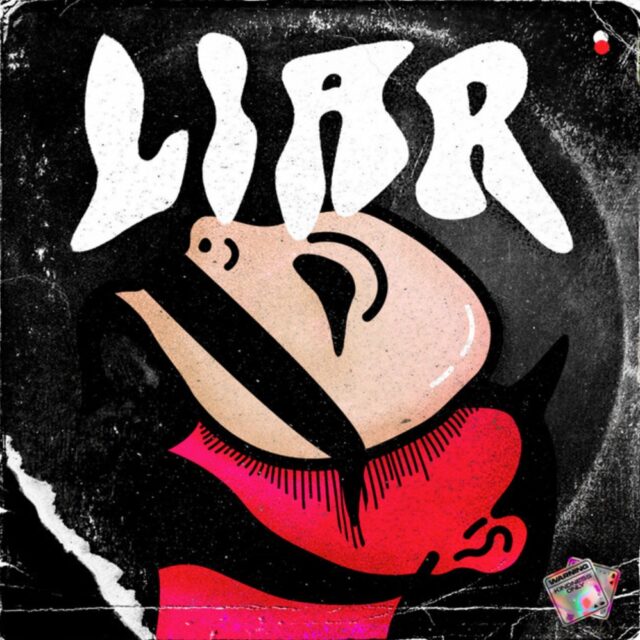
The single cover for “Morgan Wallen: Lies Lies Lies” (2024) features a close-up of a human left eye with the word “lies” repeated three times, dripping down his cheek.

The book cover for “Thread of Lies” by Myles Ojabo features a close-up of half of the main character Tito Ogheneovo’s face, with only one eye visible.

The American commercial television network, Columbia Broadcasting System, uses the acronym “CBS.” Columbia Broadcasting System is one of the oldest and largest TV networks in the United States, offering a wide range of programming, including news, dramas, comedies, and sports. It is famous for its iconic logo, a stylized eye, and has been nicknamed “The Eye Network” because of it. The acronym “CBS” is pronounced “see B-S.” “B-S” famously stands for “bullshit,” which is fitting considering the amount of propaganda the network produces and broadcasts.

Comic-Con is short for Comic Convention and is a series of annual events dedicated to comics, science fiction, fantasy, films, TV shows, and other aspects of popular culture. The Comic-Con logo features an eye, and the word “con” which means “scam,” “fraud,” and “deception.”
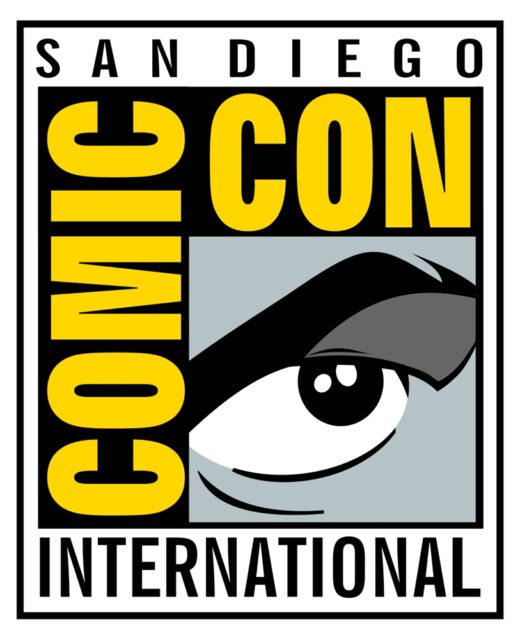
In the movie “The Great Gatsby” (2013), Jay Gatsby tells Nick Carraway lies about himself. A shot appears where Jay Gatsby is partially visible, out of focus, with only one eye in frame, as Nick’s voice-over says, “The way he spoke. No wonder people thought he was lying.” Click to watch the video clip.

In the movie “The Emperor’s New Groove” (2000), Pacha returns home from a meeting with Emperor Kuzco. His wife, Chicha, asks Pacha why he was invited to meet the emperor. The reason is that the emperor wants to evict them from their home to build a swimming palace on their land. However, Pacha hesitates with one eye closed before lying and giving the sign of innocence as he says that the emperor wasn’t able to meet him after all. Click to watch the video clip.

The single cover for “Henrik: Liar” (2024) features a minimalistic drawing of a single eye.
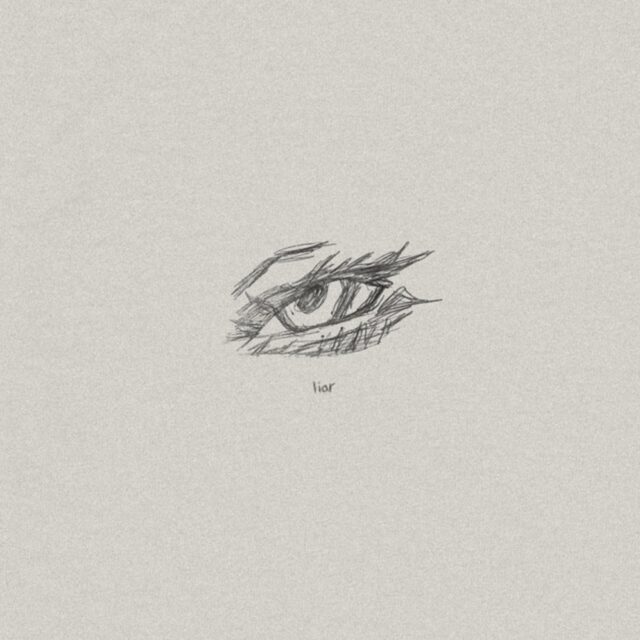
The cover of the novel “Lie to Me” by David Martin features a man’s face with only his left eye visible, as his right eye is hidden in the shadow.

In the TV series “Breaking Bad” (2008-2013), season 1, episode 4, Jesse Pinkman is asked what happened to the ceiling in the hallway, which now has a massive hole in it after he dissolved a body in the bathtub on the second floor, causing it to corrode through the floor. Jesse lies and says he believes the house is caving in. He points to his bruised left eye and says, “It hit me in the eye.” Click to watch the video clip.

In the TV series “Weeds” (2005-2012), season 1, episode 3, the neighbor’s cat has been shot and killed. The character Shane is asked if he shot his neighbor’s cat with a BB gun. However, he denies it and claims that he shot a mountain lion right in the eye, which is a story that is difficult to believe. Click to watch the video clip.
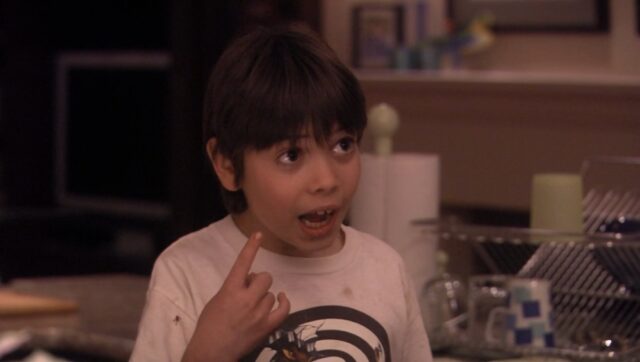
In the music video for “Blink-182 – First Date,” the artist Tom DeLonge sings, “Please don’t look at me with those eyes. Please don’t hint that you’re capable of lies,” while winking at the camera with one eye. Click to watch the video clip.

In the movie “Chip ‘n Dale: Rescue Rangers” (2022), the character Dale starts his first day at a new school. Nervous about making a good first impression, Dale pretends to stab himself in the right eye with a pencil as a joke. Click to watch the video clip.

The single cover for “Chloe Qisha: I Lied, I’m Sorry” (2024) features a close-up of her, with only the right side of her face visible in frame.

The cover of the novel “Call Me a Liar” by Colette McBeth features a close-up of the right half of a woman’s face, with only one blue eye visible.
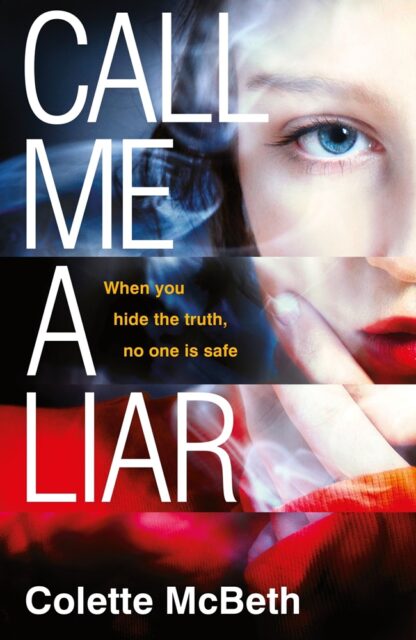
In the animated movie “Kung Fu Panda 4” (2024), a boar wears an eye patch. When he suddenly lifts it, he reveals that both of his eyes are fine, meaning he doesn’t actually need the eye patch. The boar is standing among a group of thieves, suggesting that he is pretending to be blind in one eye as part of a scam to gain sympathy and deceive others. Click to watch the video clip.
In the movie “The Mummy Returns” (2001), the pilot named Izzy Buttons is unnecessarily wearing an eye patch covering his left eye for stylish reasons. Click to watch the video clip.
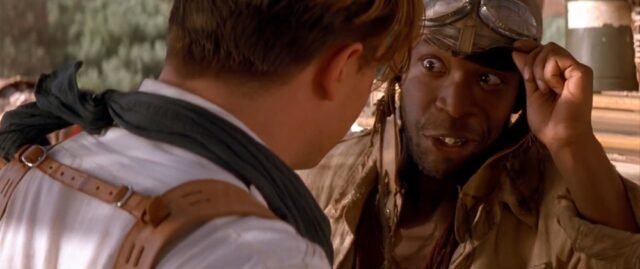
In the animated movie “The Last Unicorn” (1982), a cat character moves his eye patch from the left eye to the right, revealing that both eyes are perfectly fine. Click to watch the video clip.
Spotify once had a thumbnail for one of their most popular playlists “Hits Don’t Lie” featuring a female artist covering her right eye with a red cloth.

In the animated movie “Monsters, Inc.” (2001), the cyclops character Mike Wazowski pretends to carry a human girl (Boo) disguised as a monster. Boo’s monster disguise has only one eye as she lost the other earlier in the movie. Mike starts running, causing the group in the room to chase after him as a distraction, allowing the monster character James P. Sullivan, who is hiding behind the door, to escape with Boo. Click to watch the video clip.
In the lyric video for the song “Imagine Dragons – Bad Liar,” as he sings “Look me in the eyes,” a large single eye appears. Click to watch the video clip.
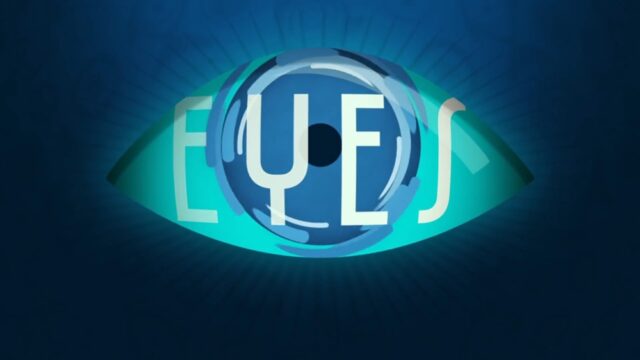
Trust me, darling, trust me, darling.
So look me in the eyes.
Tell me what you see.
Perfect paradise
tearing at the seams.
I wish I could escape.
I don’t wanna fake it.
Wish I could erase it.
Make your heart believe.
But I’m a bad liar, bad liar.
Now you know. Now you know.
I’m a bad liar, bad liar.
Now you know, you’re free to go (go).
There is a song on the music album “Rita Ora: Ora” (2012) called “Been Lying,” where she repeatedly sings, “I’ve been lying to you.” On the album cover, she covers her left eye with her hair and hand. The gold on the cover, along with her wearing large chains, necklaces, bracelets, and rings, symbolizes her imprisonment in fantasy. The image and song complement each other well when people listen to the song on a music player that displays the cover art.

The single cover for “Gwen Stefani: Baby Don’t Lie” (2014) features her with her hair covering her right eye while holding a prism in front of it.

In the movie “Kung Fu Panda 4” (2024), a chameleon character has the ability to shape-shift. Before transforming back into a chameleon, she takes the form of a crocodile with a blind right eye. Click to watch the video clip.
In the song “Rihanna – Numb (ft. Eminem),” Eminem says:
Look me in my eyeball.
Do I look high? (No.)
I love the way you lie, girl.
The single cover of “Boo Seeka: Deception Bay” (2015) features both members of Boo Seeka with only one eye visible through the transparent text overlapping the image.

The single cover for “Dylan: Liar Liar (ft. Bastille)” (2023) features Dylan standing in front of a pool table with her hair covering her left eye.

The music album cover for “Peter Frampton: Premonition” (1986) features Peter Frampton with a mask partially covering his face. He is looking through the left eye opening of the mask with his right eye.
“Premonition” is the fictional concept of having an intuition that something important or significant is going to happen in the future, without any concrete evidence or logical reasoning. The eye symbolism emphasizes the theme of fantasy. Additionally, the album contains a song called “Lying.” The image and the song complement each other well when people listen to the song on a music player that displays the cover art.

In the animated movie “Snow White and the Seven Dwarfs” (1937), the Evil Queen concocts a plan to kill Snow White using a poisoned apple. She transforms herself into an old hag, bent and wicked, hiding her true form behind a sinister disguise. With her new appearance, she sets off to find Snow White at the cottage where she lives with the Seven Dwarfs. The Queen offers her a red apple, but Snow White is hesitant. The Queen tempts her by claiming it’s a “wishing apple,” saying that just one bite will make Snow White’s dreams come true. The Queen grins wickedly with one eye closed in a crazed, sinister expression, emphasizing her malevolent intent. She watches eagerly as Snow White takes the fatal bite.
The Evil Queen is portrayed several times with only one eye visible during this scene. Click to watch the video clips.
The single cover for “Tektony and Teddy Bnzo: Eyes Don’t Lie” (2024) features a close-up of a human right eye with a red “X” drawn over it.

The music album cover of “Monophonics: In Your Brain” (2012) features a big psychedelic eye. There is a song on the album called “Deception.” The image and the song complement each other well when people listen to the song on a music player that displays the cover art.

The movie “Alpha Dog” (2006) is about a group of young drug dealers who kidnap a teenager, Zack Mazursky, as leverage against his brother’s debt, leading to tragic consequences when the situation spirals out of control. The character Johnny Truelove tells Zack that he will be set free tomorrow, before winking at him and leaving the room. Johnny is lying, as their plan is to kill Zack. Click to watch the video clip.

In the movie “Dumbo” (2019), Dumbo has only his right eye visible while he grabs Holt Farrier’s prosthetic hand with his trunk. A prosthetic hand is deceptive because it imitates or pretends to be an actual hand. Click to watch the video clip.
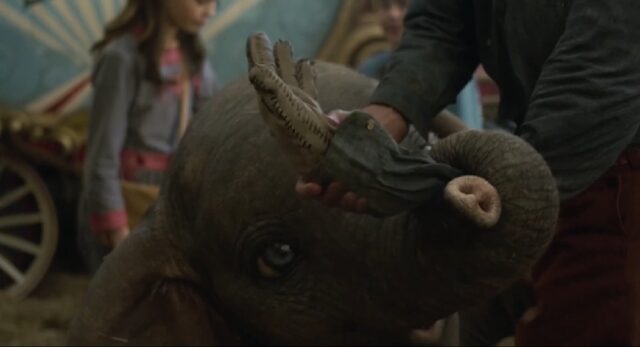
In the movie “Dumbo” (2019), there’s a scene where Holt Farrier walks an elephant in circles during a circus show. The elephant’s eye is visible as Holt repeatedly adjusts his fake mustache. Click to watch the video clip.
In the TV series “Kevin Can Wait” (2016–2018), season 2, episode 10, titled “Kevin Moves Metal,” the salesman Jerry tells Kevin, “She thinks I’m lying about the sales to pay less alimony. Of course, I wouldn’t do that. Right?” Jerry winks at Kevin, and Kevin winks back, confirming that he understands Jerry is lying. Click to watch the video clip.
In the music video “Taylor Swift – The Man,” the artist Taylor Swift is disguised as a man. She winks to the camera. Click to watch the video clip.

In the music video “Tones and I – Dance Monkey,” the artist is disquised as an old man. She winks to the camera. Click to watch the video clip.

In the music video “Rihanna – Rude Boy,” she sings, “I ain’t faking, no, no,” before winking at the camera. Click to watch the video clip.

In the movie “Stuart Little 2” (2002), Stuart, the tiny talking mouse adopted by the Little family, embarks on an adventure to help a new friend, Margalo, a small bird. After rescuing her from an attacking falcon, Stuart welcomes Margalo into the family home. However, Margalo mysteriously disappears, and Stuart suspects that she’s in danger. Along with Snowbell, the family cat, Stuart sets off on a mission to rescue her from the menacing Falcon. Stuart’s parents have always been cautious due to his small size and the dangers of the outside world. During his mission, Stuart calls home to talk to his brother George, thanking him for covering for him. When their mother walks in, George lies, saying that Stuart is at Will’s house. Suddenly, Will arrives for a visit. George quickly jumps between his mother and Will, giving Will a wink to signal that he has to play along with the lie. Click to watch the video clip.

In the movie “Aladdin” (2019), we are only shown the right eye of the villainous Jafar as he steals the magical lamp from Aladdin. Click to watch the video clip.

Articles:
Eye
Definition: The “eye” is a complex sensory organ responsible for vision. It detects light and converts it into electrochemical signals, which are then processed by the brain to produce images….
Eye and Smile
Definition: The “Eye and Smile” is a symbol that consists of a single eye and a smile. Etymology: The English word “eye” comes from the Old English “ēage”, which is…
Eye of Fantasy
Definition: “Eye of Fantasy” refers to the symbol of a single eye used to represent a situation that is impossible, unrealistic, or inaccurate. It is often used to indicate that…
Eye of Jesus
Definition: The term “Eye of Jesus,” also known as the “Eye on the Cross,” typically refers to a metaphorical or symbolic concept within Christian theology and spirituality. It is not…
Eye of the Devil
Definition: The “Eye of the Devil” typically refers to a malevolent, watchful gaze that symbolizes evil, misfortune, or a sinister presence. It can be interpreted literally, as an actual eye…
Eye of Truth
Definition: The “Eye of Truth” is a symbolic concept carrying dual meanings. The Eye of Truth is used by spiritual people as a metaphor for seeing that which does not…
Eyes of Horus
Definition: The “Eyes of Horus” is an ancient symbol originating from ancient Egyptian mythology where a set of two eyes were referred to as the Eyes of Horus, Udjat, or…
Illuminati
Definition: “Illuminati” refers to individuals who understand how language, religion, and the world system are scams. Etymology: The term “Illuminati” originates from Latin and means “the enlightened.” It is derived…
The All-Seeing Eye
Definition: The “All-Seeing Eye,” also known as the “Eye of Providence” or the “Eye of God,” is a symbol often depicted as an eye enclosed in a triangle and surrounded…
Tower of Babel
Pieter Bruegel the Elder: The Tower of Babel (1563). Lucas van Valckenborch: Tower of Babel (1594). Gustave Doré: The Confusion of Tongues. Definition: “Babel’s Tower” is a fictional tower from…




























































































































